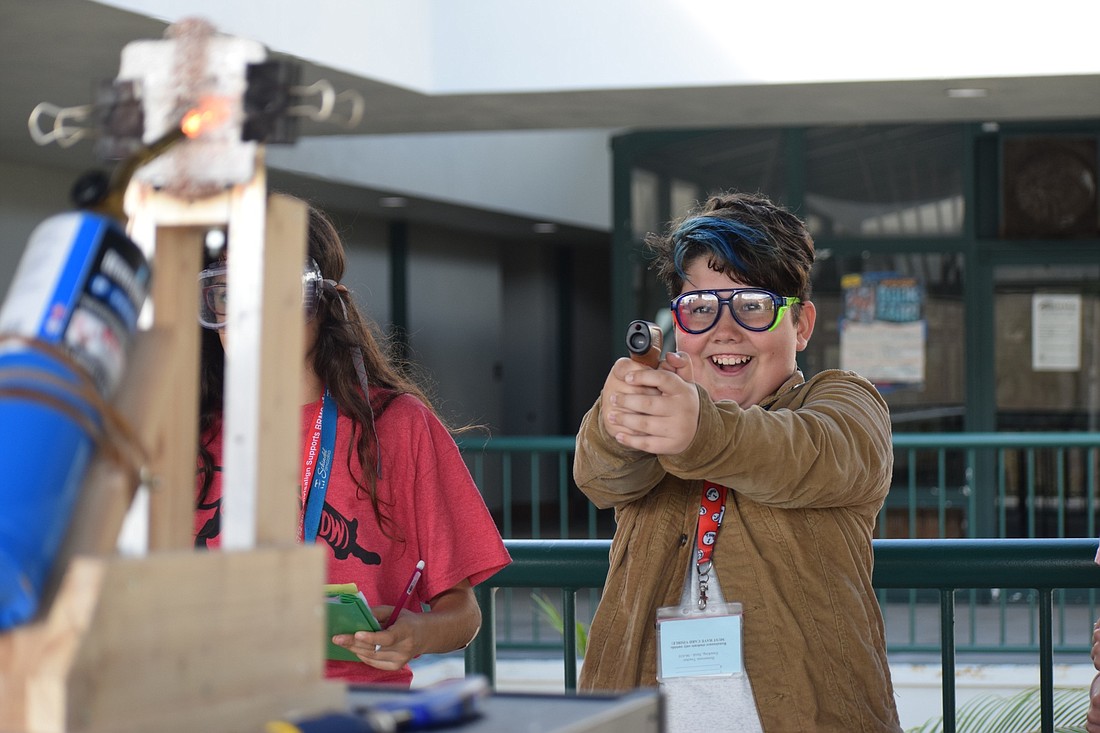- April 26, 2024
-
-
Loading

Loading

Eric Holt, a seventh grader at Braden River Middle School, beamed a laser at his group’s egg to measure its temperature.
His group, which included Holt and seventh graders Breanna Nasser, Ben Schappacher and Ella Pramuka, all watched in awe as five minutes slowly ticked past and their egg, Eggo, was under intense heat from a blowtorch with only a shield they had created protecting it.
In the end, their shield succeeded because Eggo remained raw.
Seventh grade science, technology, engineering, art and math students were tasked with creating an ablative shield of different materials that they thought would best protect an egg from being cooked.
The hands-on experiment, called eggstronaut, taught students about thermal energy and was a simulation to what NASA engineers must create to protect astronauts when they reenter the Earth’s atmosphere, which takes about five minutes.
“They have to be able to analyze what supplies will be best for thermal conduction and thermal insulation,” science teacher Jennifer Hall said.
Each material — such as aluminum foil, copper mesh, spackling compound, felt and steel wool — cost a certain amount of credits. In this experiment, credits were the equivalent of dollars. Materials couldn’t be returned after they were purchased.
“It’s not just about science,” Hall said. “They really have to go into the idea of cost efficiency. We all know right now that not everything has free money sources.”
Many of the students said the biggest challenge was choosing which materials would be the best insulators that could withstand high temperatures.
Student Nancy Nguyen’s group researched the different materials they could use to see what their burning points were and chose to order their materials in the shield from the strongest insulators to weakest.
Student Alexandra Smith said she enjoyed the hands-on experiment and preferred it over taking written notes because she’s more likely to remember and understand the concepts taught in class.
“I liked actually being able to make decisions and to be in charge of the experiment,” Smith said.
Ryan Fitzstephens liked the engineering aspect of the project as it “wasn’t overwhelming like some other projects.”
Students were also able to decorate their eggs using Sharpies. Parker Adey drew himself onto his egg, which he named Wert because that’s the name he uses for everything online.
“I do cartoon animations, and this is how I draw myself,” he said of his egg that had brown hair, a blue shirt and a slim black smile drawn on it.
Fitzstephens said that even the color used to decorate the egg could impact how it handles the heat because darker colors attract heat.
Although some eggs remained raw after five minutes of intense heat, others weren’t so lucky and were slightly cooked. One group’s egg even exploded.
Nasser was doubtful at first when her group’s egg was being tested because their shield started burning quickly, but the shield was able to outlast the timer. Their shield consisted of aluminum foil, aluminum mesh, cork, spackling compound, large steel and copper mesh.